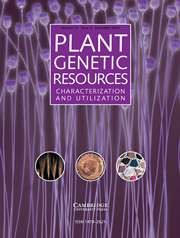No CrossRef data available.
Article contents
Comprehensive evaluation and exploration of elite resources of Shanlan upland rice for agronomic traits
Published online by Cambridge University Press: 21 November 2025
Abstract
Shanlan upland rice, as a unique local rice germplasm resource in Hainan comprises abundant genetic diversity. One hundred and sixty two Shanlan upland rice accessions collected from diverse ecological regions in Hainan were systematically characterized based on 11 agronomic traits. The rich genetic diversity was confirmed by phenotypic data from two consecutive years (2023 and 2024). Coefficient of variation ranged from 14.11% to 46.04% in 2023 and from 11.45% to 44.82% in 2024, with panicle-related traits (number of primary branches, grain number of primary branches, number of secondary branches, grain number of secondary branches and grain number per main panicle) exhibiting particularly high variation. Correlation analysis revealed highly significant synergistic effects among yield-related traits. Cluster analysis of the 162 accessions consistently classified them into five major groups across both growing seasons. Through grain number per main panicle and seed setting rate investigation, three excellent resources were selected that demonstrated stable and superior performance in both seasons. Notably, Line 69 exhibited outstanding “large panicles with high seed-setting rate,” producing 261.4 and 305 grains per main panicle in 2023 and 2024, respectively, with seed-setting rates reaching 93.79% and 90.07%. This study presents phenotypic data for Shanlan upland rice, offers high-quality breeding materials for subsequent research, and lays a theoretical groundwork for conserving and exploiting Hainan’s rice resources.
Keywords
Information
- Type
- Research Article
- Information
- Copyright
- © The Author(s), 2025. Published by Cambridge University Press on behalf of National Institute of Agricultural Botany.
Footnotes
Authors contributed equally to this work.

